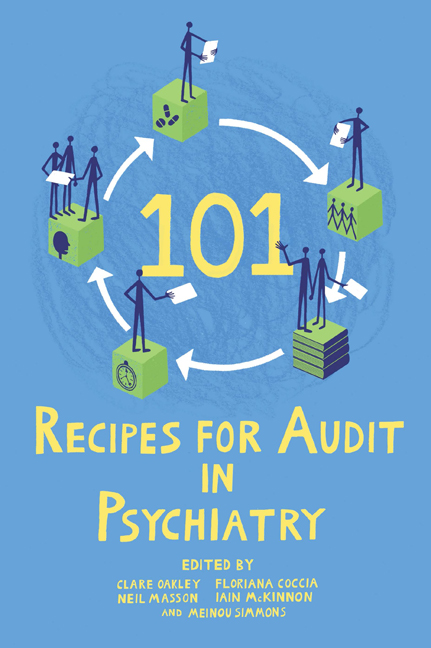Completing an audit project
Summary
In this section, each step in the completion of an audit is described in detail. As mentioned in the previous section, audit is conventionally described as a cycle. After completing each step of the audit process, the cycle should be repeated. This is to assess whether recommendations have been implemented and standards are now being met (or any other positive change can be recorded). As this process is ongoing, some authors describe the audit as a spiral rather than a cycle (Vasanthakumar & Brown, 1992) The re-audit is frequently omitted in clinical practice, especially where there is a high turnover of junior staff, as they are the most likely people to perform audits.
Although four general stages in the audit cycle were described in the previous section (Fig. 1, p. 2), there are more specific steps. In this section the audit cycle is broken into 11 steps. Not every step will be applicable to every audit, and some of the suggestions within this guide are just ‘nice to haves’:
1 Choose a topic
2 Consider forming a multidisciplinary team
3 Review the literature
4 Set standards
5 Choose an audit design
6 Collect the data
7 Analyse the data
8 Make conclusions and recommendations
9 Disseminate results
10 Implement change
11 Re-audit
Step 1. Choose a topic
Consider which area to audit
In 1966 Donabedian described three areas which can be audited in the healthcare setting: the facilities available (structure), what happens there (process) and the result for the patient (outcome). All audits are likely to fall into at least one of these categories; some may fall into two or all three categories.
The dimensions of quality of care that can be assessed in mental health audits could include access to services, relevance to need, effectiveness, equity, social acceptability and efficiency (Maxwell, 1984; Hatton & Renvoize, 1991). Trusts are now required to meet the standards of quality and safety that are set out in two pieces of legislation: the Health and Social Care Act 2008 (Regulated Activities) Regulations 2010 and the Care Quality Commission (Registration) Regulations 2009. There are 28 specific regulations, which cover the care and welfare of people who use services, infection control, the safety of premises and consent to treatment.
- Type
- Chapter
- Information
- 101 Recipes for Audit in Psychiatry , pp. 7 - 18Publisher: Royal College of PsychiatristsFirst published in: 2017



